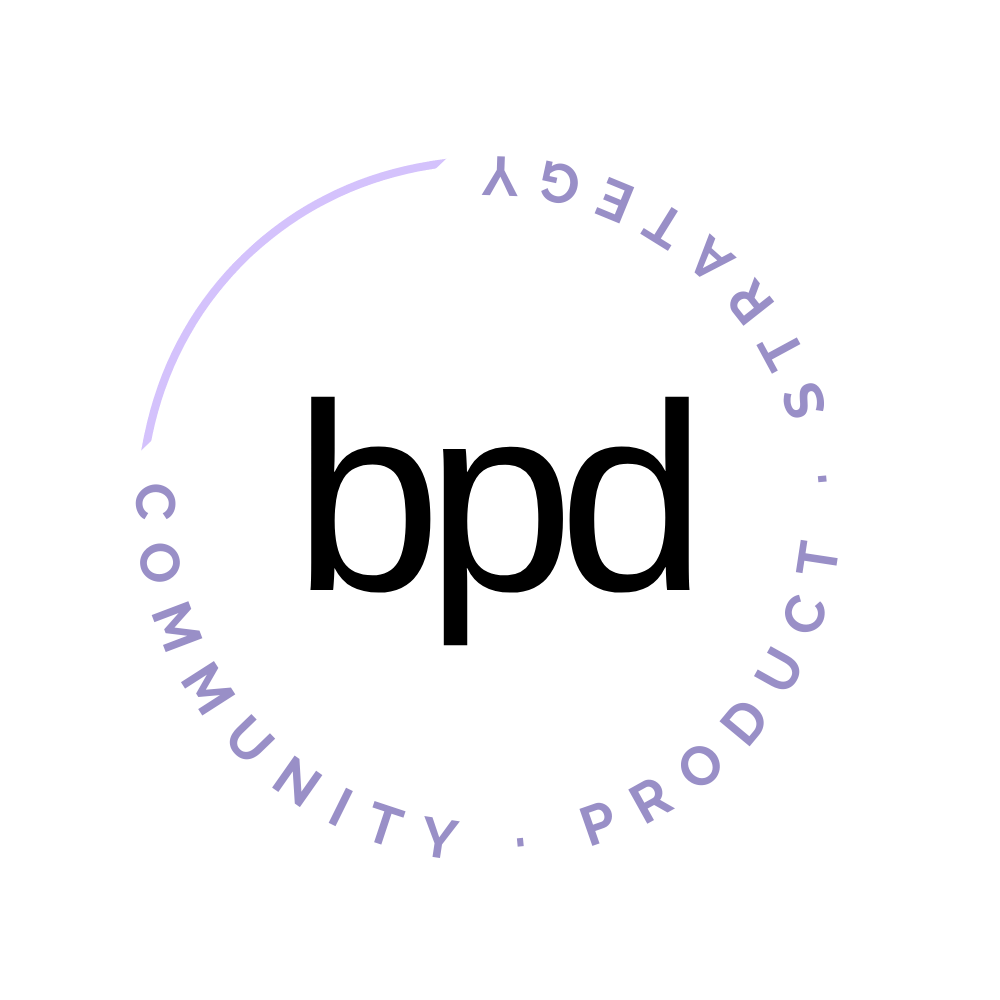#03 How To Embrace Risks & Prioritize Your Ideas
The greatest creators, product leaders + builders embrace risk.
Jay Clouse recently shared the idea of “ripping off the band-aid” in his business and it sparked a thought for me. How many ideas do we just put off no matter how good they are because we are afraid to face the risks?
In life the risks are obvious– quit the job, break up with the boyfriend, move to a new place– we put these kinds of things off all the time because along with these decisions come risk of failure or misery.
Maybe we’d be quicker to make a change if we hung this Tim Urban sketch in our office.
Credit: Tim Urban
In business it’s less obvious and a pro + con list isn’t enough. There are 1 million ideas floating around the halls of slack & personal Notion spaces. There are so many initiatives that even the idea of prioritizing or choosing can feel completely paralyzing. Who can relate?
But the only way to innovate and create something truly spectacular is to embrace risk and prioritize the big ideas. In this essay I’m sharing my favorite framework to get clear on priorities so that you can build your product roadmap with confidence.
When to prioritize your ideas
This strategy is useful whether you’re building a creator business or a software product. If you’re overwhelmed with ideas, directions and possibilities, this is for you.
Recently at bossbabe we had about 10 different ideas for initiatives to evolve our products and offerings over the next 1-2 years. New courses, products, coaching, masterminds, collaborations– you name it and it was on the list.
I have to be honest, I walked into that session thinking I knew the outcome and left with an entirely different plan. I am SO grateful we went through this exercise.
Turns out, its best not to assume. So step into the uncomfort zone and face your risk-demons.
Let’s get started.
Set up your matrix
Make columns with the following headers:
Ideas + Initiatives
Customer Value
Business Value
Level of Effort
Idea Score
Risk Factor / Degree of Doubt
Risk Score
PS: If you’re signed up to my newsletter check the bottom for how you can get my template, detailed scoring rubric + training for free!
Ideas + Initiatives
The rule of thumb here is that they should generally be relative size. You don’t want something that takes a year and something that takes a day on the same list.
You can do this exercise whether you’re prioritizing your quarterly feature roadmap or you’re thinking about your annual initiatives.
Quick aside: This isn’t just a spreadsheet, it’s a workshop
This exercise has a trojan horse. It helps you find alignment on a team. And don’t stop reading if you’re a solopreneur because I have a suggestion for you too.
How to run a prioritization workshop:
Invite 2-4 people to do this with you. It’s best to have your key stakeholder present, cross-disciplinary representation (think: business, feasibility, customer reps) and anyone that sits close to research.
If you’re a solopreneur then invite your trusted advisors and people you feel understand your business or industry well.
For every 10-12 initiatives on the list book 90 minutes. If you’re list is way longer, I challenge you to comb through them and pick out the 10-20 best opportunities to prioritize.
Fill in the list of initiatives + ideas beforehand but give everyone a chance to review and add to it before the session.
Customer Value
Now that you know this is a workshop, the idea is that each person decides on a score silently then you, as facilitator, count down 3-2-1 and asks everyone to drop their score in the chat at the same time. If you’re in person you can write it on a paper and then flip it over.
Use a rubric so that each person is aligned to the same score meaning. Discuss why each person scored the way they did until you come to an agreement about a score to enter into the matrix.
How much will our customers value this initiative or feature? This should be rooted in research. If customers won’t value it, then it isn’t worth prioritizing.
Score: 0-10
10 = absolutely want it now
0 = I'm not interested
Business Value
Follow the same process for scoring as outlined under customer value.
Next up is the business. Consider how valuable this initiative is to the business from a time to money perspective and whether or not this will be bespoke to your organization. This is the step where you measure the level of innovation possible within a given initiative.
Score: 0-10
10 = fundamental shift in business, doesn't exist (this way) in the marketplace
0 = barrier to entry
Level of Effort
Follow the same process for scoring as outlined under customer value.
The level of effort score is flipped from the customer and business values. You’ll notice that the higher the score the lower the level of effort to implement. The barrier to entry to get it to market is lower and therefore the score is higher, increasing your overall score in the next step.
Consider many angles in this score: technical effort, content creation, marketing, design, etc.
Score: 0-10
10 = Very low level of effort to implement
0 = Very high level of effort to implement
Idea Score
This column is for the math. Use this formula to achieve your idea score.
We multiply the customer value (x2) because it is the most important of the three factors. If customers won’t love it, choose it, and use it then it isn’t of value to the business and the level of effort doesn’t matter.
Apply this formula to every row and put scores in your "Idea Score" column.
Risk Factor
We haven’t talked much about how to factor risk into the equation yet. We cover it partially with level of effort because with a low score will come more risk. But your assumptions and unknowns also create risk.
For this factor, consider your degree of doubt. How confident are you in your score ratings? The most important aspect is making sure that you have the customer value right. If you don’t it can sway your score significantly.
As you go through this exercise its helpful to add a “questions to be answered” column so that you can recognize what needs further research to feel more confident in your scores.
Score: 1-5
1 = no doubt
5 = high uncertainty
Risk Score
This column is to help you visualize your priorities with your risk score factored in. The higher your uncertainty, the lower the risk score will fall creating a clear priority based on risk.
When you take a look at the delta of priority between your risk score and your idea score, that will tell you how big of a gap you need to fill with your research efforts and prioritize accordingly.
Prioritize + Customize
Sort your ideas by the idea score column (total scores high to low) but make sure to also consider your risk score. If the risk score changes your priority then it may be time to develop a research plan.
Ta-da! You have a prioritized idea list. Now it's time to use your gut and shift things around as you see fit. For example, you might have to complete an initiative before starting another one even though it scored higher.
I add and remove columns based on the workshop and who is attending. The last time I ran this I added a column for initiative description, a column for a 1,2,3 priority and lastly we marked our 1’s with a launch month so that we could see what our 2023 calendar looked like based on the initiatives we prioritized.
The purpose of this exercise is to think through the value of ideas from 3 different perspectives, calculate your risk and align your team. Customize it to work for you!
The best part is that you leave with clarity and confidence to put your plans to action.
If you try this I’d love to hear how it goes for you and if you have any questions I’m happy to answer them! Send me a note or if you’re subscribed to my newsletter just hit reply 🙂
If you’re not subscribed to my newsletter yet, get the latest essay + other resources every Friday.





